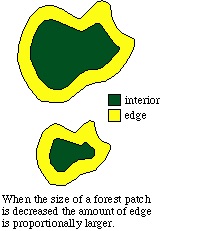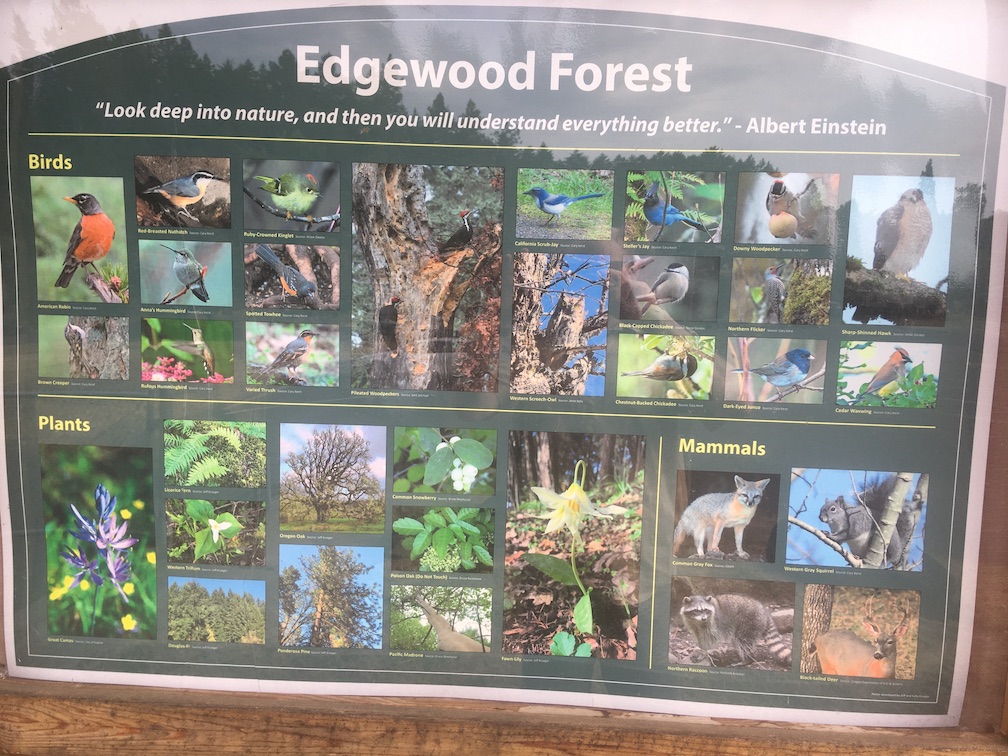
www.EWEB.wtf - EWEB completed their clearcut in August, cutting the largest Doug firs (including the 15 foot circumference champion tree) and Ponderosa pines. The largest Black Oaks were cut on August 2 when EWEB clearcut most of this public forest, rushing to destroy just as the state Land Use Board of Appeals (LUBA) issued a temporary stay of execution based on a challenge brought by former EWEB commissioner Sandra Bishop. LUBA lifted the stay on August 17, cutting resumed on the 18th and the champion big doug fir was cut down on the 19th.
Eugene environmental groups stayed silent. They did not dare challenge EWEB's mismanagement that let existing tanks degrade to the point they are unrepairable and are silent about real estate overdevelopment, including future expansions of Eugene to Veneta and Junction City which will need lots of water. They also ignore plans for massive widening of Beltline highway (12 - 14 lanes).
In a democracy the public comment period never ends. Silence is consent.

Several people have asked "what about rare species?" Do they have the legal power to stop this destruction?
Unfortunately, the answer is no, there do not seem to be any federally officially recognized endangered species.
Given mass extinction, it is reasonable to say that every species is endangered (except, perhaps, cockroaches, rats, algae, viruses, etc). But the law does not acknowledge the slow shredding of the biosphere.
The officially listed species in our region are either completely old growth dependent such as spotted owls and Marbled Murrelets (neither of them could live in EWEB forest), wet prairie inhabitants (Fender's blue butterfly and Kincaid's lupine, which stalled the West Eugene Porkway proposal) or certain aquatic species that won't be found on a ridgeline. The Endangered Species Act is a minimal gesture, sometimes helpful, but irrelevant here. Don't forget it was signed into law by President Nixon and was not intended to stop ecocide.
A couple species in EWEB are considered especially sensitive, but that is verbiage, not legal protection.
EWEB's biologist contractor stated
"The presence of ponderosa pine in this forest is somewhat notable as this native pine is becoming less common in the Willamette Valley and is recognized by ecologists as a species that should be promoted and managed for when possible."
Ecological Inventory Report, DOWL, Fe. 11, 2021
Nice words but useless for protecting those trees.
Edgewood Forest is just south of EWEB forest, next to Spencer Butte Middle School.

Record of Decision: Final Design Report (Siting) for E. 40th Water Storage Project
http://www.eweb.org/Documents/board-meetings/2021/04-06-21/m7-record-of-decision-final-design-report-siting-for-e-40th-water-storage-project.pdf
20 megabyte PDF
starts at p. 33
Ecological Inventory Report
February 11, 2021
downplays several concerns (of course)
lists a few species there
no mention of Oregon ash significance (that there is a wetland / seasonal spring)
downplaying of age of fir, pine, oak
This report also claims salamander habitat will be enhanced after construction which is ridiculous.
The closest thing to salamander habitat on the property is the ash wetland, which will no longer exist.
During dry summers, salamanders retreat to stream banks to wait for the rain to return.
Even if construction had been stopped, the seasonal spring is not wet enough in the summer for salamanders to survive. And even if it were, where are the salamanders supposed to live during the years of construction?
It’s sad to see biologists writing reports to justify ecocide.
It’s like how archeologists usually find employment with the road construction industry.
the appendix to the report includes this
From: stephen anderson >
Sent: Wednesday, October 14, 2020 7:39 PM
To: Lizzie Zemke
Subject: Re: [EXT] Ecological Study
Lizzie,
Here is the list....we have lived here for 21 years, and can attest that nearly all of the wildlife listed are regular residents
of these woods...not just passing through. We find it strange that the sequence of the tanks is exactly backwards, if they
truly wish to protect habitat. Obviously, one day, all three tanks will need to be completed, but there is no good reason
to locate the first tank right in the stand of old growth trees that will devastate much of the crucial habitat for animals
that live here now. It would not seem unreasonable to ask for a reversal of the tank sequence in light of this fact. We are
willing to bet it didn't even cross the minds of the engineers to think outside their initial plan, which did not take into
account the present timber grove....except for the fact that it is in the way. Please keep us apprised of your progress, call
if you have any questions.
Stephen Anderson
Eugene, OR 97405
Birds and animals of EWEB Hilyard
Varied Thrush
Robin
Hairy Woodpecker
Downy Woodpecker
Pileated Woodpecker
Towhee
Chickadees
Barred Owl
Western Screech Owls
Stellar’s Jay
Yellow‐rumped warbler
Bush Tit
Ruby‐crowned Kinglet
Allen’s Hummingbird
Western Flicker
Cedar Waxwing
Evening Grosbeak
Sharp‐shinned Hawk
Oregon Junco
Pygmy Nuthatch
Red‐breasted Sapsucker
Grey Squirrel
Raccoon
2
Opossum
Black‐tailed Deer
White‐crowned Sparrow
Vaux’s Swift
Violet‐green Swallow
Scrub Jay
Lesser Goldfinch
Song Sparrow
Chestnut‐backed Chickadee
Common Bush‐tit
Rio Grand Turkey
Great Horned Owl
Cooper’s Hawk
From: Mary Ann Hanson >
Sent: Wednesday, October 14, 2020 2:51 PM
To: Lizzie Zemke
Subject: [EXT] EWEB Water Storage Improvement Project historical information on site flora and fauna
WARNING: External Sender - use caution when clicking links and opening attachments.
Hello,
I am one of EWEB's neighbors living at the foot of Elliott Hill. My parents bought this
house about 1963 and lived here until their deaths a few years ago. I was a teenager
when we moved here from another part of the Eugene area and lived in the family home
until I married and moved away. My husband and I returned in 1993 to help my aging
parents. We still live here. So I have a fairly long history with what we always called
"The Hill." As a young person I loved nature and everything about it, so I collected
insects, flowers, etc.
I remember how different The Hill was in 1963. There were quail, pheasants, skinks,
snakes and tree frogs. I don't remember deer, raccoons, or wild turkeys being present,
but surely they were here in smaller numbers. There was an occasional opossum and
possible a skunk - the odor was distinctive!
I do miss the butterflies - I only counted six or seven species this year. That is
related to your work though, as many host plants are gone. The wild flowers were legion
at first. There were many fewer houses then, of course. Here is a brief list of those I
remember:
Achillea millefolium
Aquilegia formosa
Berberis (repens?)
Camassia quamash (blue but one white flowered plant) Claytonia lanceolata (pink)
Corallorhiza striata Dichelostemma congestum Dodecatheon dentatum (I remember they were
pink though) Erythronium oreganum Fritillaria lanceolata Goodyera oblongifolia Iris tenax
Lupinus bicolor Plantago lanceolata Prunella vulgaris Ranunculus sp.
Rosa (two forms)
Saxifraga sp.
Sidalcea sp.
Tellima grandiflora
Trillium ovatum
Viola sempervirens?
Cornus nuttallii
Ribes sanguineum
Mary Ann Hanson